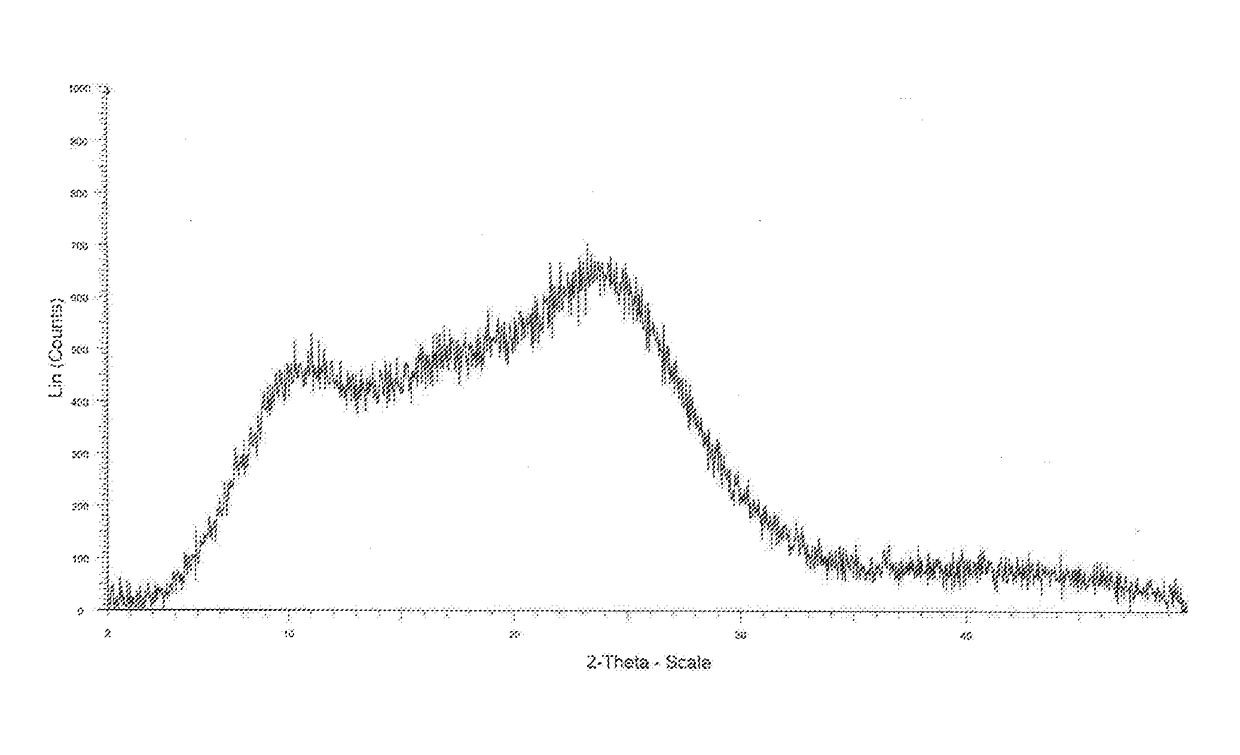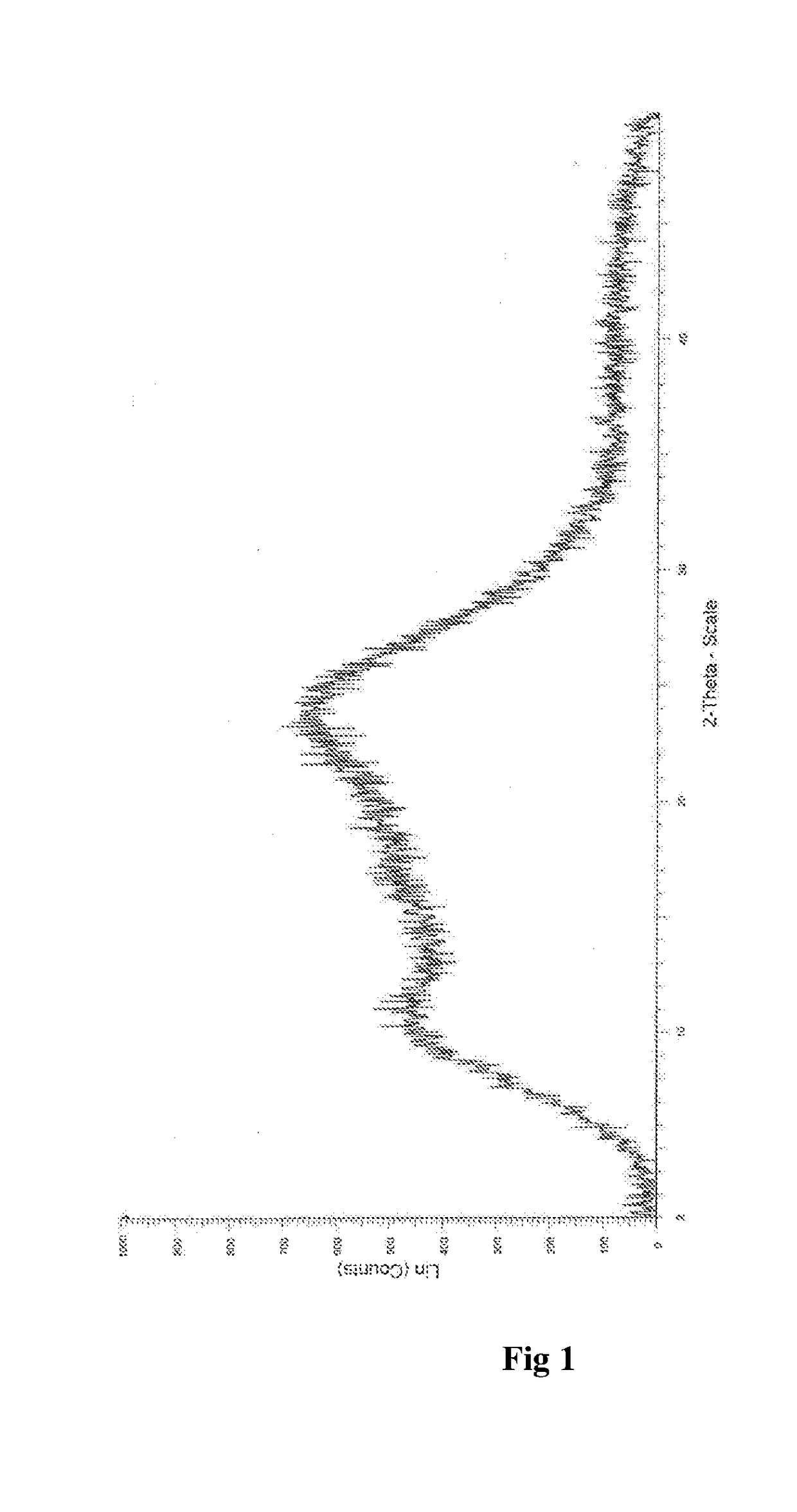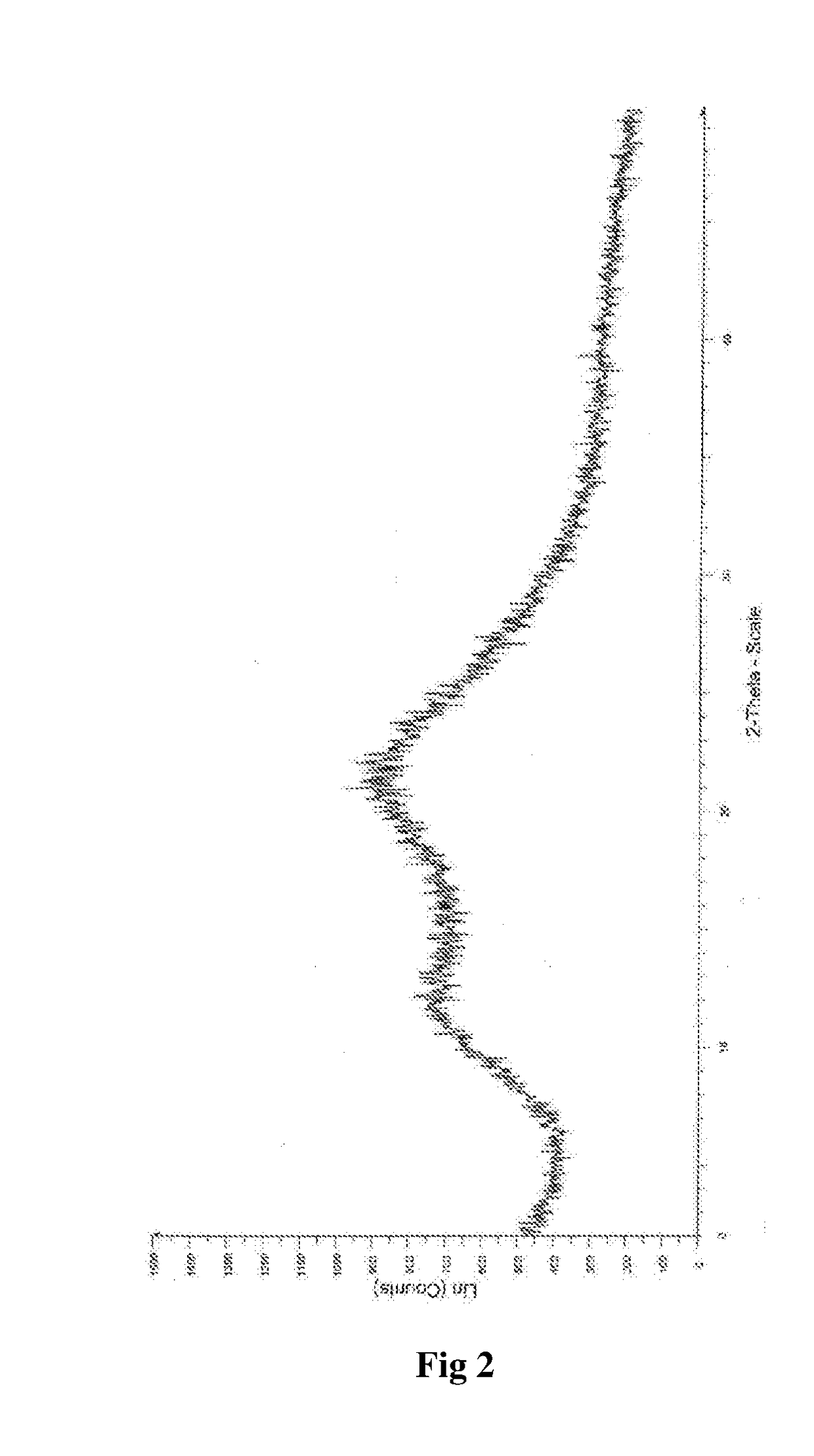Process for the Preparation of Amorphous Idelalisib and its Premix
a technology of amorphous idelalisib and its premix, applied in the field of pharmaceutical arts, can solve problems such as precipitation formation
- Summary
- Abstract
- Description
- Claims
- Application Information
AI Technical Summary
Benefits of technology
Problems solved by technology
Method used
Image
Examples
example 1
Preparation of 5-fluoro-2H-3,1-benzoxazine-2,4-dione
[0088]2-amino-6-fluoro-benzoic acid (50 g, 0.32 mole) was dissolved in acetonitrile (500 mL). Pyridine (51 g, 0.64 moles) was added. A solution of triphosgene (47.8 g (0.18 mole) in dichloromethane) was slowly added while maintaining the reaction mixture temperature between 50 to 60° C. The reaction was maintained at same temperature for next 4 to 6 hours. After completion of the reaction, solvent was removed by vacuum distillation. To the residue, 500 mL of water was added and stirred to get a slurry. The slurry was filtered, washed with water, and dried to get 5-fluoro-2H-3,1-benzoxazine-2,4-dione as off-white solid (52 g, 89% molar).
example 2
Preparation of 2-amino-6-fluoro-N-phenyl-benzamide
[0089]5-fluoro-2H-3,1-benzoxazine-2,4-dione (50 g, 0.27 mole) was dissolved in acetonitrile (500 mL) and the mixture was heated to 40° C. Aniline (25.7 g, 0.27 mole) was added and the reaction mixture was heated to 80° C.±82° C. and maintained at this temperature for 5 to 6 hours. After completion of the reaction, the solvent was removed by vacuum distillation and the residue was dissolved in methanol (200 mL). The resulting solution was quenched with water (1000 mL). The isolated solid was filtered, the solid was washed with water, and then sucked dry. Finally, solid was dried at 50° C.-60° C. for 6 to 8 hours to give 2-amino-6-fluoro-N-phenyl-benzamide brownish to off-white solid (42 g, 82.5%).
example 3
Preparation of (S)-tert-butyl-1-(3-fluoro-2-(phenylcarbamoyl)phenylamino)-1-oxobutan-2-yl carbamate
[0090]N-methyl morpholine (48.22 g, 0.48 mole) was added to a solution of (S)-2-(tert-butoxycarbonylamino)butanoic acid (88.2 g, 0.43 mole) in tetrahydrofuran (100 mL). The resulting mixture was cooled to 0° C.-−5° C. and a solution of isobutyl chloroformate (59.3 g (0.43 mole) in 100 mL of tetrahydrofuran) was added. A solution of 2-amino-6-fluoro-N-phenyl-benzamide (50 g, 0.27 mole) in tetrahydrofuran (200 mL) was slowly added at 0° C.-−5° C. The reaction mixture temperature was raised to 25° C.-28° C. and the solution was stirred for 20 hours. After completion of the reaction, water (500 mL) and ethyl acetate (500 mL) were added to the reaction mixture. The organic layer was separated, washed with water, and dried on sodium sulfate. Solvent was removed by vacuum distillation. The residue was dissolved in tetrahydrofuran (250 mL) and n-heptane was added to precipitate (5)-tert-butyl-...
PUM
| Property | Measurement | Unit |
|---|---|---|
| Fraction | aaaaa | aaaaa |
| Fraction | aaaaa | aaaaa |
| Fraction | aaaaa | aaaaa |
Abstract
Description
Claims
Application Information
 Login to View More
Login to View More - R&D
- Intellectual Property
- Life Sciences
- Materials
- Tech Scout
- Unparalleled Data Quality
- Higher Quality Content
- 60% Fewer Hallucinations
Browse by: Latest US Patents, China's latest patents, Technical Efficacy Thesaurus, Application Domain, Technology Topic, Popular Technical Reports.
© 2025 PatSnap. All rights reserved.Legal|Privacy policy|Modern Slavery Act Transparency Statement|Sitemap|About US| Contact US: help@patsnap.com



